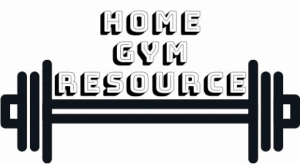At the moment, I’m living in a small apartment and can’t go to the gym. That made me wonder, is it possible to put some gym equipment on the balcony and work out there? I did some research to figure out if it is feasible and if so, what the best way to go about it is. Here you can find the results.
It’s possible to build a home gym on your balcony if it’s large enough. The equipment has to be carefully selected to make sure it can survive outside even if it’s well protected. A set of equipment that can easily be used inside and outside while easily movable is the best option for most people.
There are quite a few things that you should keep in mind if you want to build a home gym on your balcony. Below we’ll go into the possibilities, limitations, and more.
Contents
Is It Possible to Create a Home Gym On Your Balcony?
Balconies come in a lot of shapes and sizes. Size has a big impact on what you can do. If there is enough space, you can place whatever equipment you want. There will be some issues I’ll go into below.
Building a home gym on a balcony is possible if the space permits but there are some significant drawbacks.
What an effective home gym setup is doesn’t really change whether it’s in a garage or on a balcony. There are different setups that can work for different fitness goals. For different goals, you will require different equipment although there is a lot of overlap in the equipment you can use.
While the best setup for your goal won’t really change, the limitations of the space you’re going to build your home gym in will change which equipment is possible and/or practical.
A garage can house and handle pretty much all the equipment you could possibly want. A balcony has a few more limitations. That doesn’t mean you can’t create a home gym there, you absolutely can. That said, you have to make some sacrifices depending on your situation.
So, yes, it’s possible to create a home gym on your balcony but there are some things to keep in mind.
First, let’s look at the limitations of a balcony gym and then we’ll look at some of the best setups.
Balcony gym problems
While in some ways working out on your balcony sounds amazing, there are also a few problems.
Other than that, there isn’t all that much holding you back from building a home gym on your balcony.
Balcony gym solutions
Creating a functional home gym on your balcony comes with unique challenges, but here are some solutions to make it work:
1. Equipment Choice:
2. Equipment Protection:
3. Weight Limit:
4. Privacy:
5. Weather Protection:
Balcony Gym Example Layouts
Let’s pull everything together and look at some suitable balcony gym setups for a few different goals. The setups are imaged on a pretty common-sized balcony.
Weightlifting
For people who want to lift weights, this is a setup you can use and will fit many balconies. You still need a reasonably large one though. You need a space of at least 6’ x 7’ to use this equipment. That’s on the large side for most balconies.
- Squat rack
- Barbell
- Weight plates
- Bench
- Optional: Adjustable dumbbells
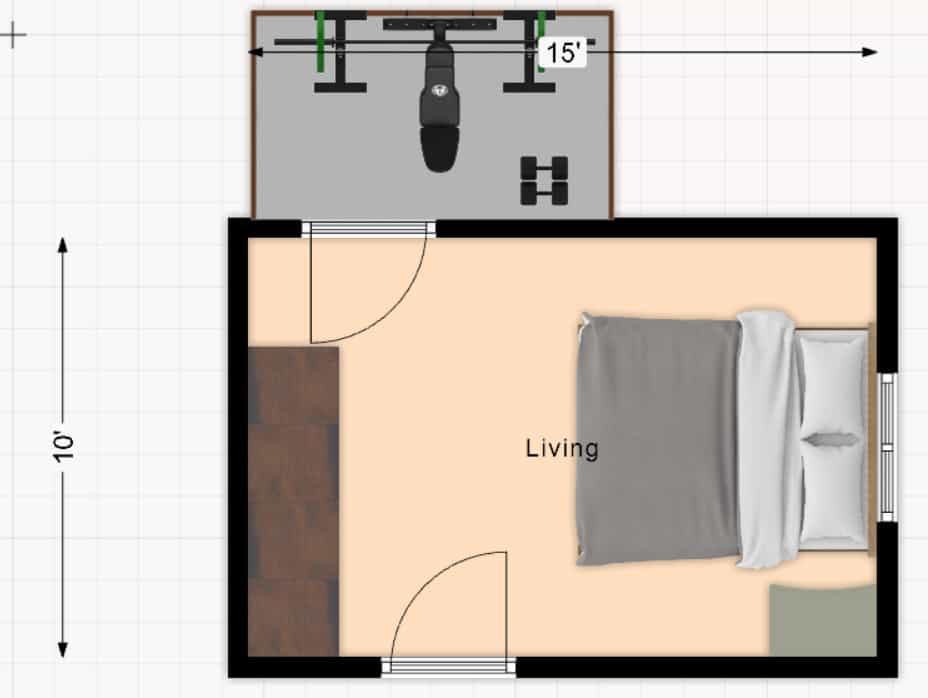
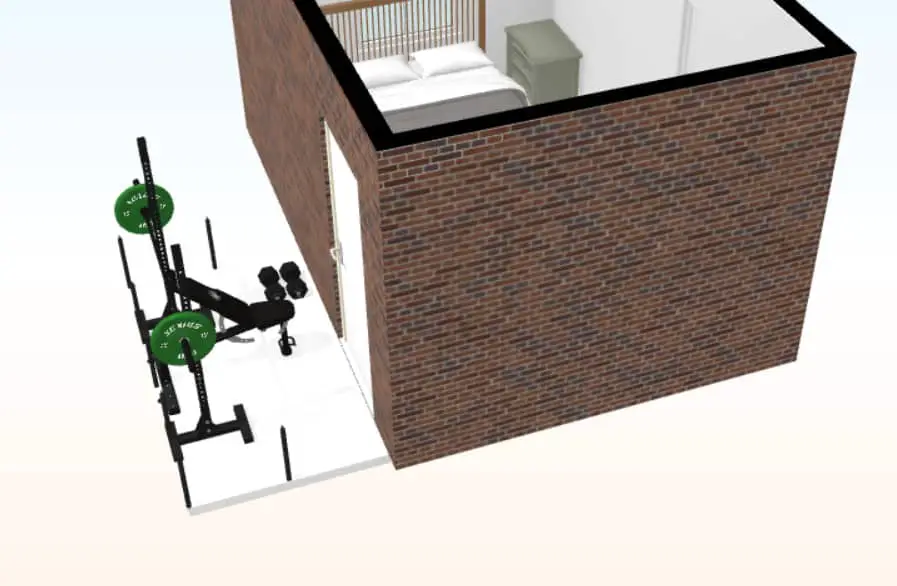
General fitness
If you don’t really want to lift free weights, this setup is a bit more suitable for you. It’s still focused on exercising your muscles but if you have enough space, you can add an exercise bike for cardio workouts. The best thing about this setup is that it’s all pretty easily movable. Except for the exercise bike, it’s all equipment you can lift and move.
That means you can also use it indoors when the weather is bad.
- Bench
- Adjustable dumbbells
- Kettlebell
- Resistance bands
- Optional: Pull up bar
- Optional: Exercise bike
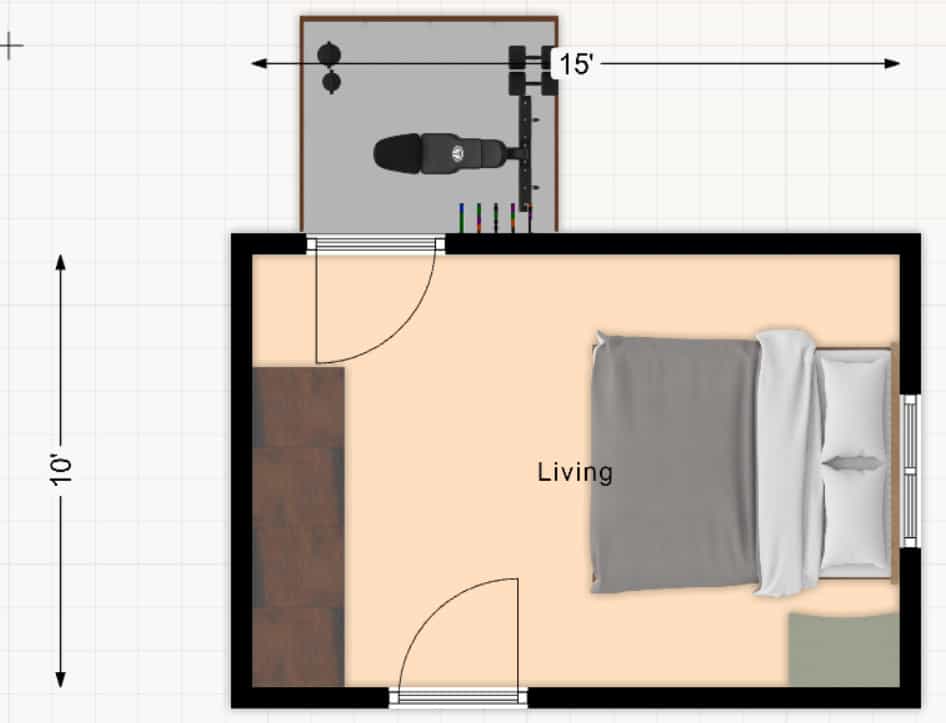
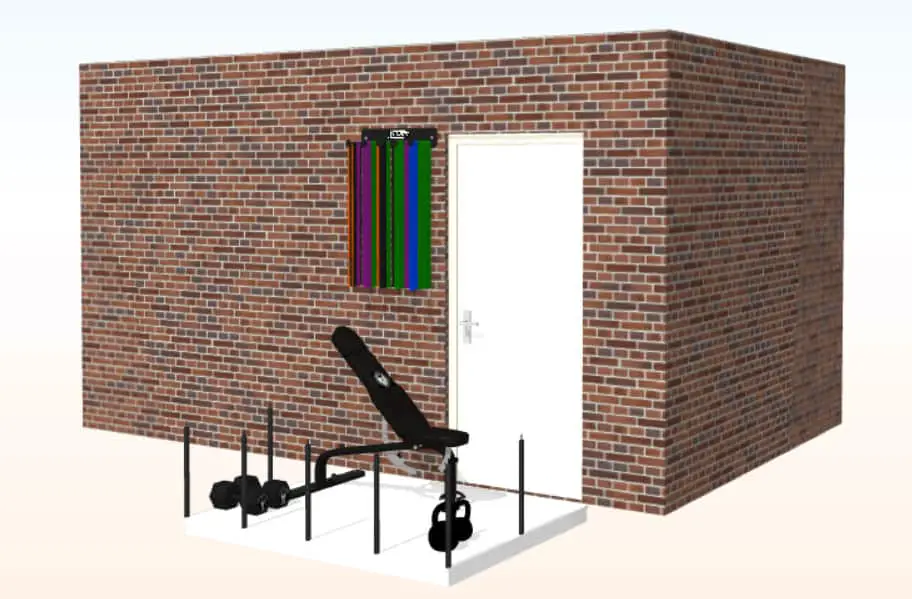
These things do require you to have a space of about 5’ x 6’ at minimum to do a full workout. Balconies tend to be quite narrow. That doesn’t mean you can’t use this setup but it does mean the exercises you do are somewhat limited. Especially exercises where you stretch out your arms next to your body.
If you can work around this (by only doing one arm at a time for example) You can get away with a narrower space. You still want to be able to bend over and lie down so 4’ by 6’ is an absolute minimum.
If you want a pull-up bar and/or exercise bike in addition to this equipment, you’re going to need a lot more length.
Cardio + Bodyweight
For people who want to focus on cardio exercise, the cardio machine should come first. If you have any space left over, you can add more gym equipment.
For most cardio machines you already need quite a bit of space but if you have enough space left, you can easily put down a yoga mat to do bodyweight exercises as well. And if you can fit a yoga mat, you have enough space for some kettlebell exercises as well.
Both a yoga mat and kettlebell are easily picked up and taken inside.
- Exercise bike
- Yoga mat
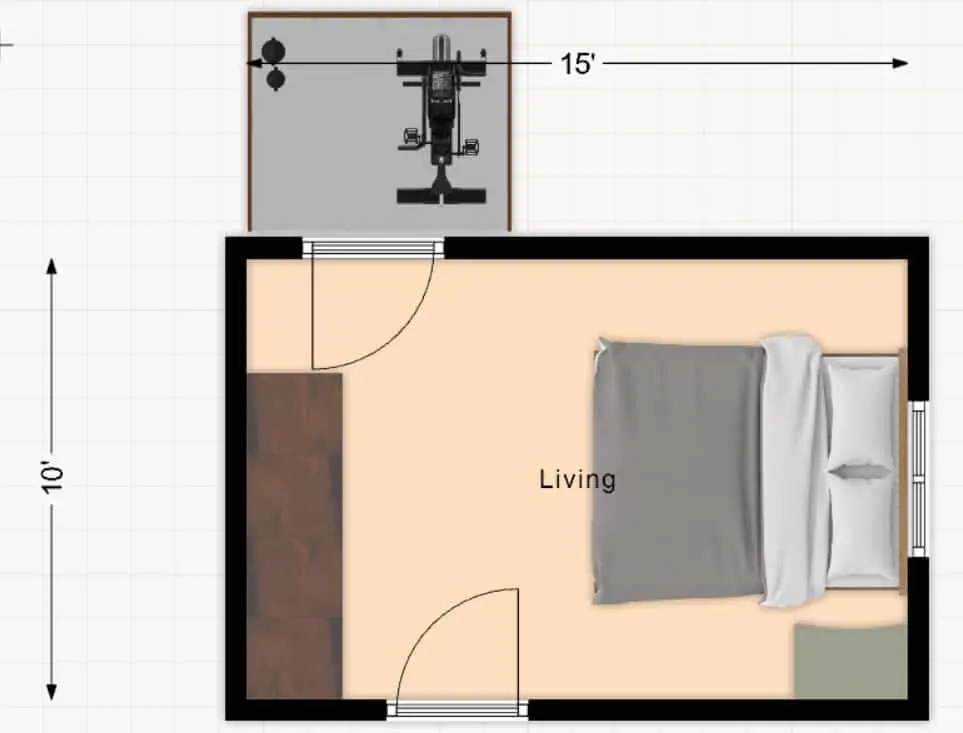
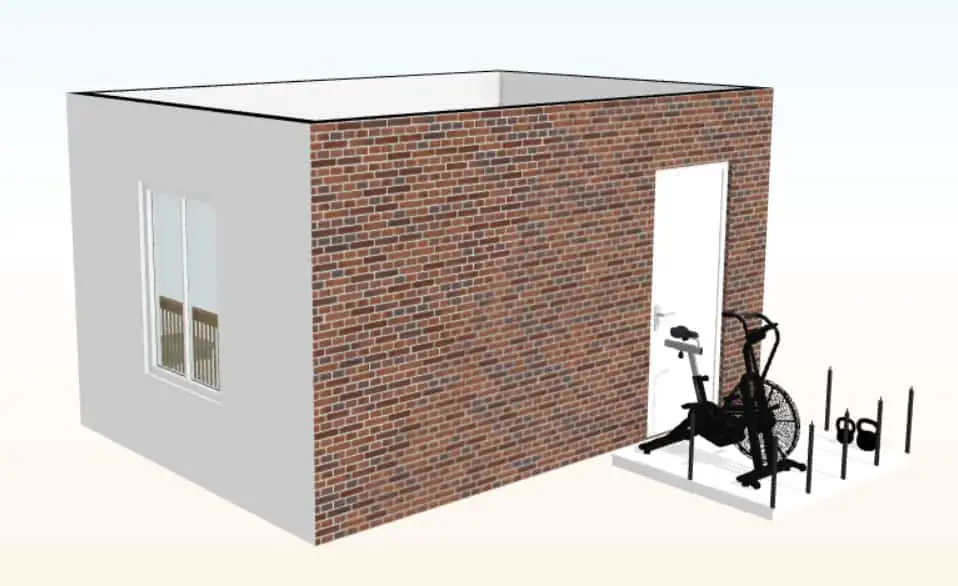
How big does your balcony have to be for a gym?
As said above, one of the most common problems with creating a home gym is the limited space. It’s an important problem that does require a bit more explanation than a single paragraph.
If you’re in the lucky position where you have a large balcony, awesome, you can take inspiration from some of the other posts in the “floor plans” category. Most balconies don’t have the same shape or size as the examples shown there though.
Balconies tend to be relatively long and narrow compared to other rooms. That means we’re going to have to be creative with our setups to make something fully functional. Check below for some examples.
There are a few minimum requirements though. If all you want is a cardio machine on there, it just has to fit and you need a little space to get on it. However, if you want to do other movements, it’s necessary to think about the space you need to move properly.
For full movement in all directions, you need a balcony of at least 6’ x 6’ (if you’re under 6’ tall). It’s possible to reduce one of those dimensions to about 4’ but that’s the absolute minimum you need to have enough room to do the movement necessary for a workout. With 4’ of width you’re already pushing it.
Hybrid home gym
You could try to find solutions for all the potential problems on the balcony. That does disregard an option that’s probably the best for most situations;
Create a home gym setup you can use both indoors and outdoors. What would that look like? You have a room with a balcony. You have a setup that’s usable inside and when the weather is nice, it’s easy to move outside.
Most equipment is perfectly suited to use both inside and outside as long as the weather is nice. Moving all the equipment could be a bit difficult if it’s heavy and/or you have a normal sized door to access the balcony.
Ideally, you would have large sliding doors so it’s easy to move equipment around. That still requires you to have equipment that is relatively easy to move around. This means heavy weightlifting equipment is not going to be the best setup because it is a workout in itself to move it around.
While this is an ideal situation, that doesn’t mean it’s always possible. The room that’s connected to the balcony is often too valuable as another space to convert into a home gym. Most people don’t want gym equipment in their living room or bedroom. If you aren’t bothered by it and there is enough space, go for it.
Of course, there are some types of equipment that are relatively easy to move around and still very effective if combined correctly;
A bench and adjustable kettlebells can provide some free weight training and both of those are pretty easy to move. Just a single pair of dumbbells is one trip from inside to outside. You can pick a bench that’s not too heavy and preferably has little wheels to make moving easier.
Kettlebells alone can provide a complete workout but if you combine them with a rubber mat (yoga mat) and some resistance bands, you can train your whole body with equipment that’s pretty easy to carry from inside to outside and vice versa.
Cardio equipment is a bit more difficult. At the same time, I completely understand that doing your cardio outside is awesome when possible. If you want to move it around, the machine can’t be very big and/or heavy. It’s just too cumbersome to make moving it onto the balcony practical.
The best option is a spin bike. These are often designed to be easily moved around for group classes so it’s not too difficult to get it onto your balcony. Of course, you’ll have to roll it so you can’t have too high a doorstep.
Treadmills, rowers, and elliptical trainers are just too big and heavy to move regularly.
